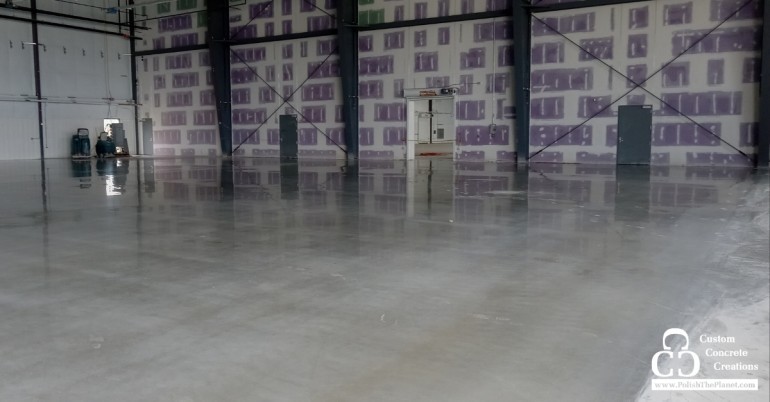
Art knows no bounds, and creativity can flourish in unexpected places. Polished concrete floors can transcend their utilitarian purpose and become a form of artistry. A canvas often overlooked lies right underneath our feet, colored concrete floors! Here is how craftsmanship and creativity merge to create stunning custom designs and patterns.
The canvas: Polished concrete floors
Polished concrete, in its raw form, might seem like an unremarkable surface. Yet, it possesses incredible potential waiting to be unlocked. This versatile material, consisting of cement, aggregates and water, can be transformed into a breathtaking work of art with the right vision and skilled hands.
The artistry: Custom flooring designs
Staining and dyeing
Stains and dyes are applied to the concrete's surface, infusing it with vibrant colors that mimic the depth and richness of traditional paintings. Artists can create intricate designs, gradients and even abstract compositions, turning the floor into a captivating masterpiece.
Saw cutting, scoring
Saw cutting, or scoring, is a technique that allows artists to etch precise lines and patterns into the concrete surface. Whether it's geometric shapes, intricate mosaics or flowing curves, saw cutting can add texture and depth to the floor, transforming it into a unique work of art.
Embedding objects
Artists can embed objects into the concrete, adding an element of surprise and intrigue to the floor's design. This could range from glass fragments and seashells to recycled materials, creating a visual and tactile experience for anyone walking across the floor.
Stenciling and graphic elements
Stenciling and graphic elements offer a way to incorporate logos, emblems or meaningful symbols into the polished concrete surface. Businesses often use this technique to brand their spaces, adding a touch of identity and artistry to their environments.
The craftsmanship: From surface prep to maintenance
While artistry fuels the creative process, craftsmanship provides the technical know-how to bring these visions to life.
Surface prep
The concrete surface must be meticulously prepared. This includes grinding and polishing to achieve the desired smoothness and shine. The level of sheen and reflectivity is a critical consideration for the final artwork.
Timing and technique
Stains, dyes and other decorative elements must be applied with precision. Timing is crucial, as different materials react differently with the concrete. The artist's technique in blending colors, creating gradients and controlling the flow of the design is where true craftsmanship shines.
Protecting the art
Once the flooring is complete, it's essential to protect it. This involves sealing the surface with a high-quality concrete sealer that not only enhances the colors but also guards against wear, stains and moisture.
Maintenance
Polished concrete art is an investment that requires ongoing care. Regular cleaning and maintenance are essential to preserve the floor's beauty and longevity.
Polished concrete in real spaces
The beauty of polished concrete is that it can grace a wide range of spaces, from businesses to public areas and galleries.
Restaurants
Polished concrete floors can be transformed into dynamic art pieces that complement the restaurant's theme and ambiance.
Retail stores
Unique and eye-catching floor designs can draw customers into a store and create a memorable shopping experience.
Museums and galleries
In these spaces, polished concrete art can serve as both a functional and aesthetic element, enhancing the overall visitor experience.
Colored concrete floors are a testament to creativity and skill
The fusion of artistry and craftsmanship on polished concrete floors showcases the boundless creativity that resides within the minds and hands of skilled artisans. Polished concrete floors, with all their elegance and charm, are indeed masterpieces right beneath our feet. If you’re interested in upgrading your space with colored concrete floors, contact us today!
